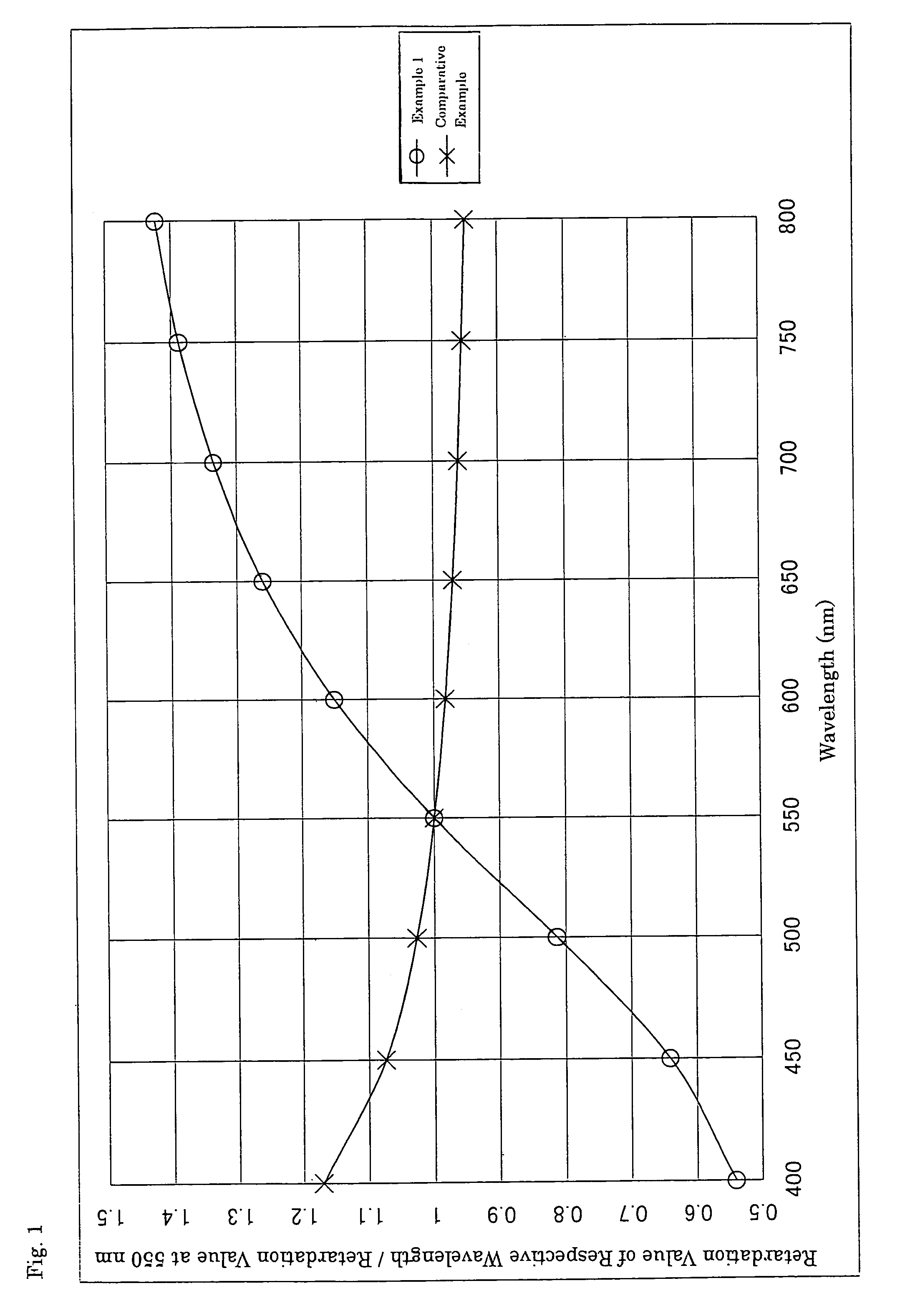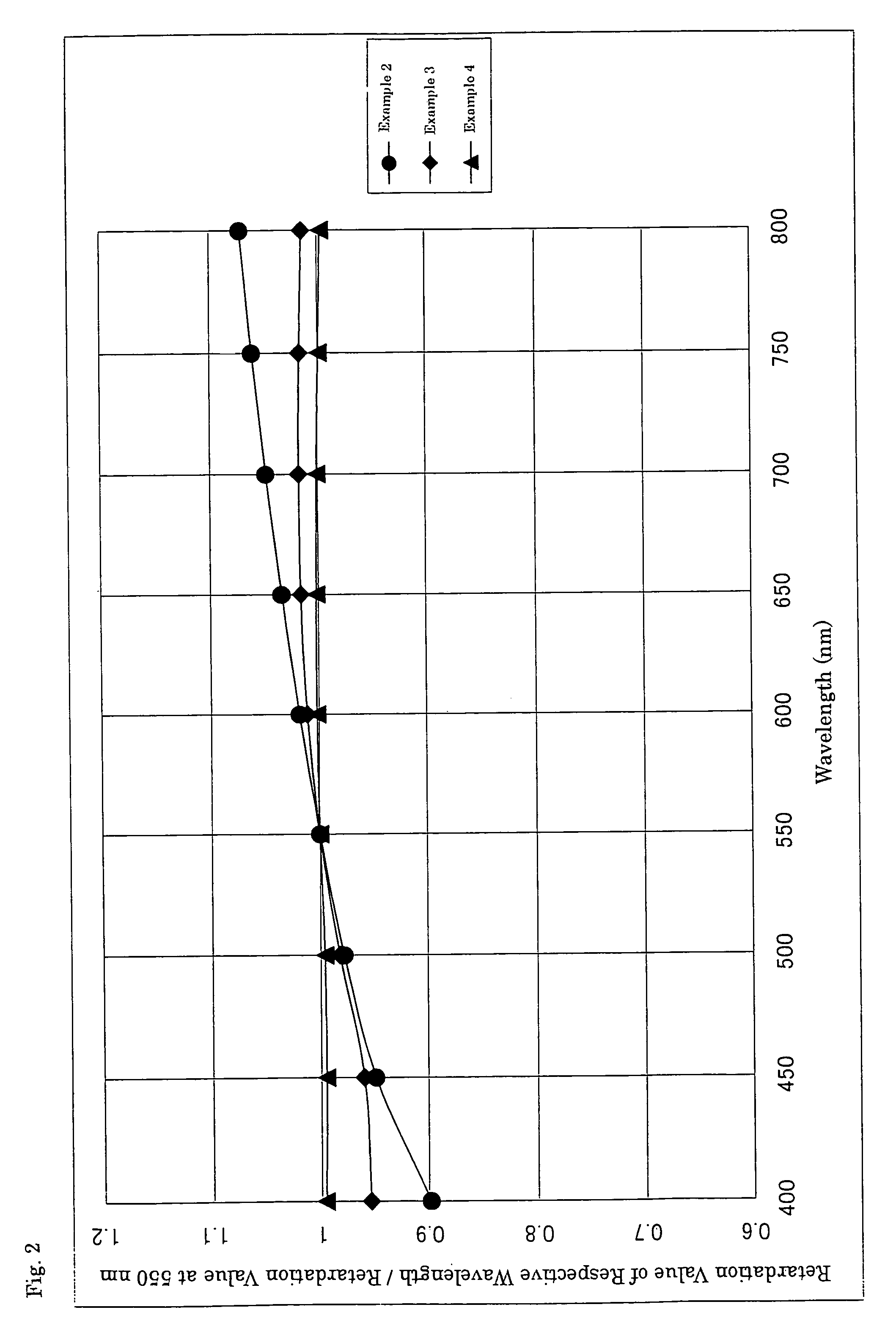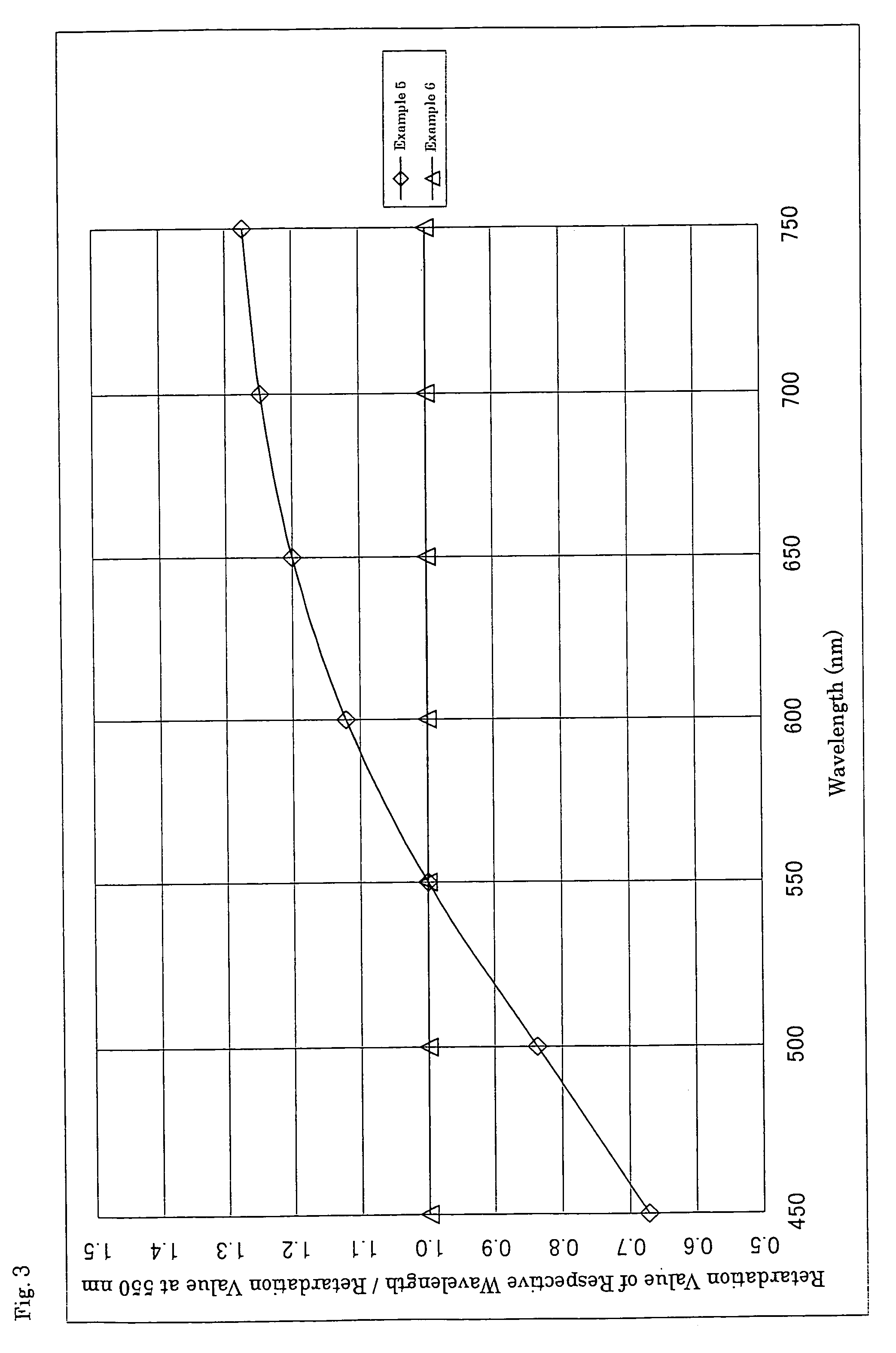Liquid crystalline compound and reterdation difference film using the same
a liquid crystal compound and difference film technology, applied in the field of refractive film, can solve the problems of lowering contrast and visibility of display images, failing to obtain a sufficient optical rotatory effect, and failing to obtain a sufficient reflection prevent effect, etc., to achieve convenient orientation, easy preparation, and easy fixation
- Summary
- Abstract
- Description
- Claims
- Application Information
AI Technical Summary
Benefits of technology
Problems solved by technology
Method used
Image
Examples
example 1
[0108]Twenty-five grams of hydroxypropyl cellulose (manufactured by Aldrich, molecular weight MW: 100,000) was dissolved in 200 ml of acetone under reflux upon heating. Next, 62.5 ml of acryloyl chloride (manufactured by Wako Pure Chemical Industries, Ltd.) was added dropwise thereto while cooling with ice water, and after completion of the dropwise addition, the mixture was stirred at room temperature for one hour and further stirred for 2 hours under reflux by heating. Next, 30 ml of n-butyryl chloride (manufactured by Wako Pure Chemical Industries, Ltd.) was added dropwise thereto while cooling with ice water, and after completion of the dropwise addition, the mixture was stirred at room temperature for one hour and further stirred for 2 hours under reflux by heating. This reaction mixture was thrown into a large excess of ice water, whereby a white reaction product was precipitated. This product was thoroughly washed with water, again dissolved in acetone, re-precipitated with w...
example 2
[0116]A acrylic acid-esterified and propionic acid-esterified hydroxypropyl cellulose ester was obtained in the same manner as in Example 1, except for using 30 ml of propionyl chloride (manufactured by Wako Pure Chemical Industries, Ltd.) in place of the n-butyryl chloride. It was confirmed from observation by a polarization microscope that this compound was in the liquid crystal state at room temperature, and it caused heat polymerization at about 125° C. but kept the liquid crystal state. Next, a composition comprising 90 parts by weight of this hydroxypropyl cellulose ester, 10 parts of a reaction product (a trade name: Kayarad R-167, manufactured by Nippon Kayaku Co., Ltd.) of 1,6-hexanediol diglycidyl ether with acrylic acid, which is a non-liquid crystalline compound, and 5 parts by weight of a photopolymerization initiator (a trade name: Irgacure 184, manufactured by Ciba Speciality Chemicals) was prepared. It was noted that this composition was a lyotropic liquid crystal co...
example 3
[0121]A composition was prepared in the same operation as in Example 2, except for using 80 parts by weight of the hydroxypropyl cellulose ester used in Example 2 and 20 parts by weight of a reaction product (a trade name: Kayarad R-167, manufactured by Nippon Kayaku Co., Ltd.) of 1,6-hexanediol diglycidyl ether with acrylic acid. It was noted that this composition was a lyotropic liquid crystal composition because it was in the liquid crystal state at room temperature. Next, A 40 μm-thick retardation film of the invention was obtained in the same operation as in Example 2. The resulting retardation film had a retardation value of 191 nm at 550 nm. Next, The wavelength dispersion characteristics of this retardation film was evaluated in the same manner as in Example 1. The results are shown in FIG. 2. At this time, birefringence at the respective wavelength was Δn450=0.0046, Δn550=0.0048 and Δn650=0.0049 respectively.
PUM
| Property | Measurement | Unit |
|---|---|---|
| wavelength | aaaaa | aaaaa |
| wavelength | aaaaa | aaaaa |
| wavelength | aaaaa | aaaaa |
Abstract
Description
Claims
Application Information
 Login to View More
Login to View More - R&D
- Intellectual Property
- Life Sciences
- Materials
- Tech Scout
- Unparalleled Data Quality
- Higher Quality Content
- 60% Fewer Hallucinations
Browse by: Latest US Patents, China's latest patents, Technical Efficacy Thesaurus, Application Domain, Technology Topic, Popular Technical Reports.
© 2025 PatSnap. All rights reserved.Legal|Privacy policy|Modern Slavery Act Transparency Statement|Sitemap|About US| Contact US: help@patsnap.com



